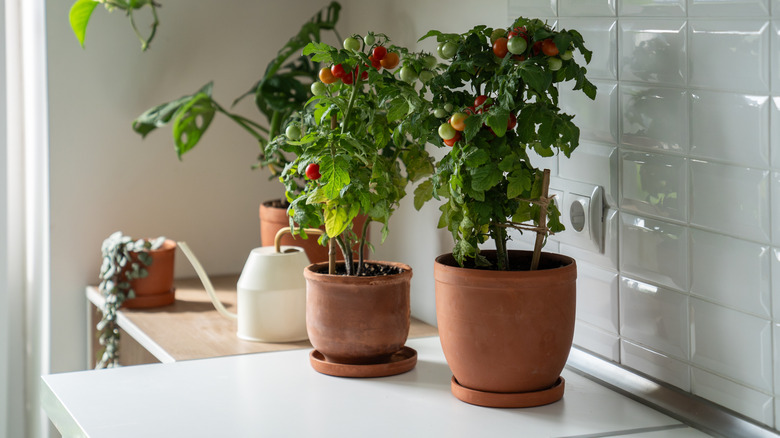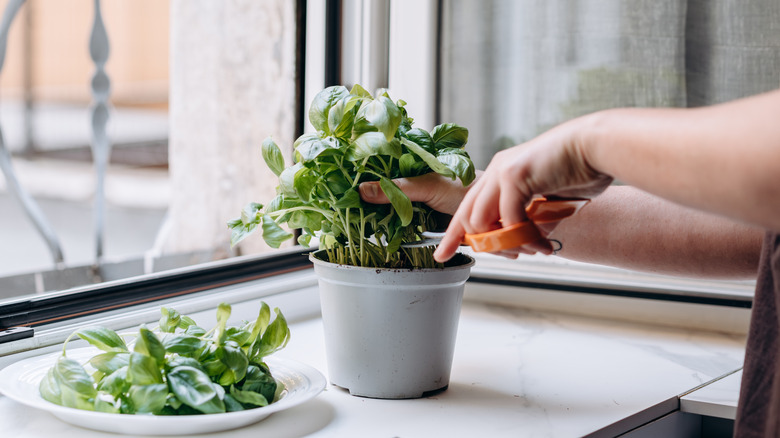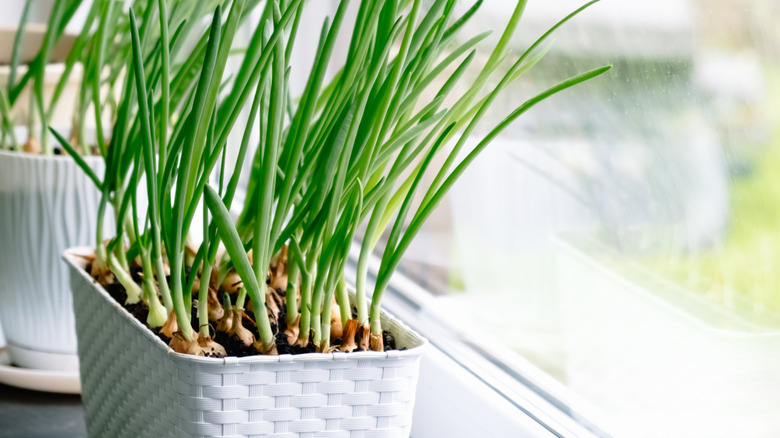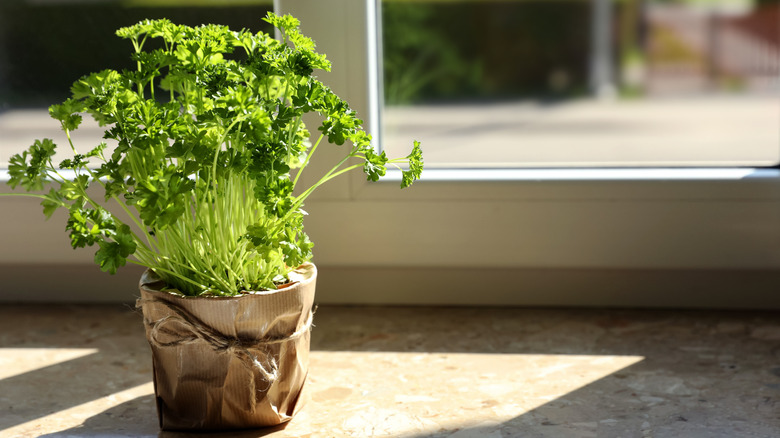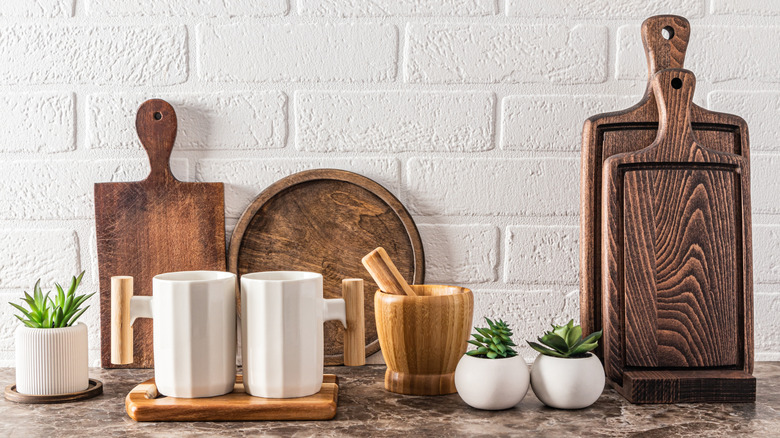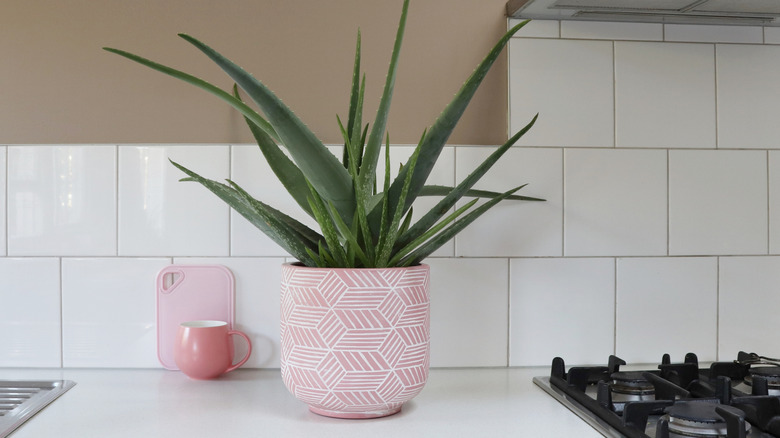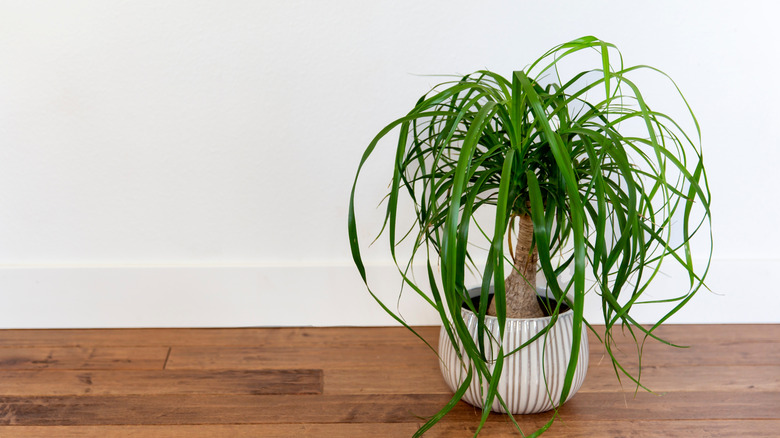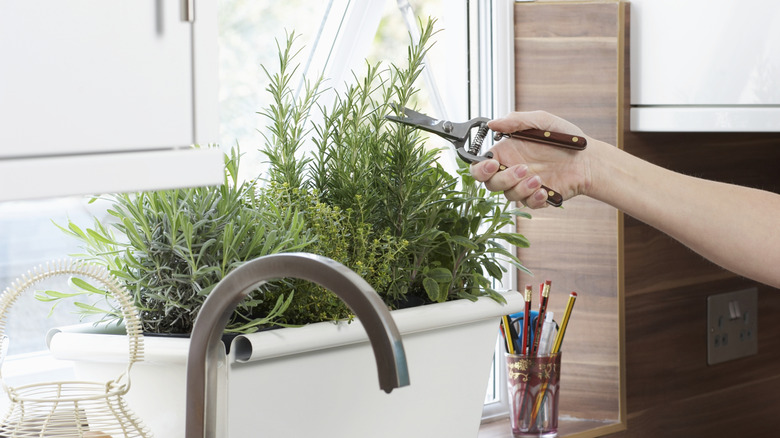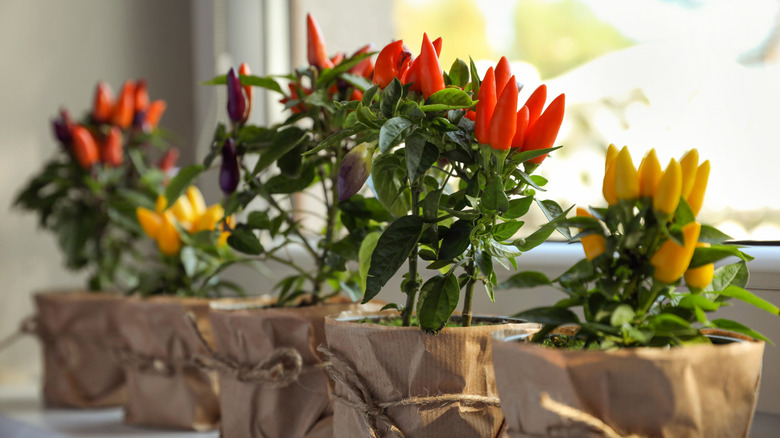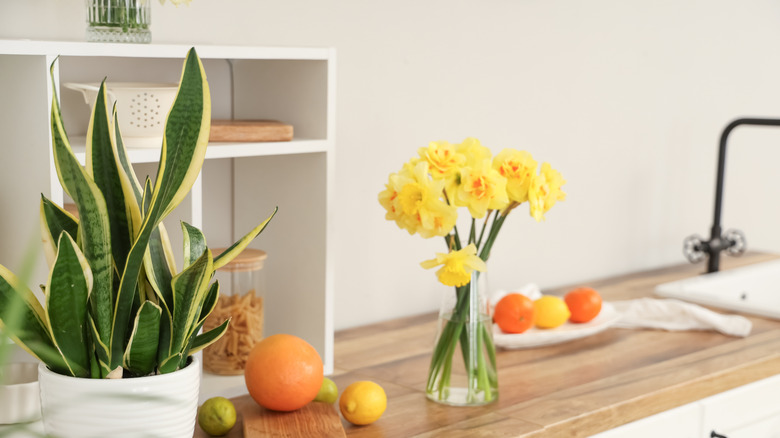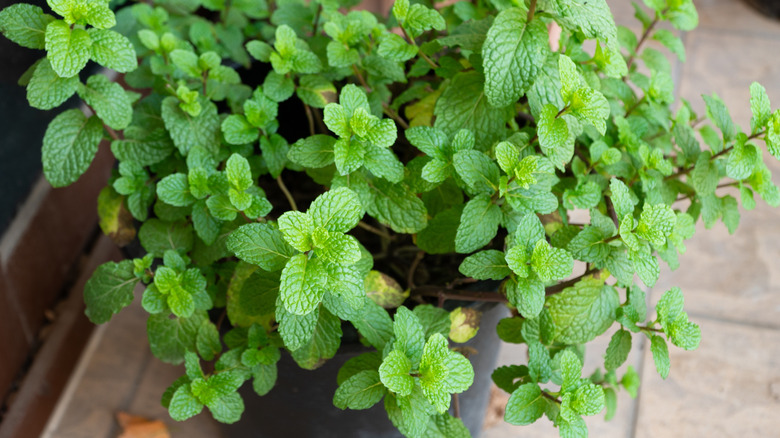12 Plants You Should Always Style On Your Kitchen Countertop
The kitchen is the heart of the home, and while it's common to see plenty of decor in this space, it might be less common to witness plants on kitchen countertops. If you're looking for some functional ingredients to keep on hand, explore the myriad herbs that will grow well in this setting. On the other hand, should you crave some cleaner air, many plants will do just that. If you're ready to embark on this journey of bringing plant like into your cooking space, there a number of gorgeous plants that you should always style on your kitchen countertops.
Cooking calls for fresh ingredients, and keeping some of these important plants on hand in the kitchen makes sense and will help elevate your home's style. Try options like basil, mint, cherry tomatoes, and green onions for flavorful but compact plants. For a heightened visual appeal, go for plants like succulents or trailing ivy plants that each put forward their own unique and pleasing aesthetic. Regardless of your needs — practical or decorative — styling your kitchen countertops with plants can bring more charm to your everyday life.
Cherry tomatoes
Cherry tomatoes (Solanum lycopersicum var. cerasiforme) are the quintessential plant to style in your kitchen: In addition to being absolutely delightful to behold and being compact in size, they also have the clear benefit of providing you with a steady stream of produce that can be used in your recipes. Remember to always follow the right care instructions for indoor produce — cherry tomatoes will require plenty of sunlight and warm temperatures to provide the largest possible crop.
Potted basil
Basil (Ocimum basilicum) is one of the best indoor herbs for your kitchen garden, thanks to the fact that it is pretty easy to grow and is a wonderful addition to a number of delicious recipes. The deep green leaves of a basil plant will blend beautifully with all sorts of kitchen features, including whites counters, wooden cabinets, and stainless steel appliances. You'll want to give basil a bright and sunny spot in the kitchen where it can get sunlight for 6 to 8 hours every day, in addition to keeping its soil well-drained.
Green onions
If you're looking for a low-maintenance, fast-growing, and pretty pop of greenery in your kitchen, consider planting green onions (Allium fistulosum). These versatile add-ins can dress up salads, omelettes, and rice bowls, as well as be a fool-proof garnish to nearly any savory dish. They are easy to grow in a bright window, and their white and green stalks look lovely when planted in a white ceramic or terracotta pot. You can even regrow green onions from scraps if you have some on hand.
Parsley
Parsley (Petroselinum crispum) pairs well with many of the other edible plants mentioned thus far. It's such a go-to in a number of recipes that you're likely to see yourself reaching for a sprig of it often. Beyond the culinary appeal of parsley, this herb also has a way to evoking a sense of beauty and peace in the kitchen. Parsley needs sunlight and water to be healthy, but other than that, it is relatively low-maintenance in terms of care.
Succulents
Succulents are definitely having their moment — these tiny and cheerful plants can bring a little joy to any space. Why not add a few to your kitchen? They are beyond easy to care for, only requiring watering occasionally and plenty of sunlight, and can be tucked into the corner of your windowsill or on a brightly-lit countertop. Since they have shallow roots, you can also play around with their containers more than some plants that are more picky. Try placing one in a teacup for a charming, themed kitchen plant.
Aloe vera
If your kitchen needs a little more decor, go for a potted aloe vera plant. The beautiful leaves of the plant are often deep green, and healthy aloe vera are plump — just beware of the sharp edges! While an aloe vera plant needs bright sunlight, avoid giving it a spot that gets hot, or its health might rapidly decline. So long as you can strike the right balance of hydration and sunlight, aloe vera can thrive in the kitchen — it also is useful as a first aid resource if you get burned on a hot pan.
Trailing ivy
Want to add some dynamic visuals to your kitchen? There are few better ways to do so than with some trailing ivy plants. Whether you have some clearance between the top of your upper cabinets and the ceilings or if you have floating shelves in your kitchen, trailing ivy plants can hang down, providing a hint of wild appeal in the kitchen. Some ivy plants are mildly poisonous, however, so make sure you consider this before purchasing. For an ideal non-toxic option, choose the grape ivy (Cissus rhombifolia), which likes indirect sunlight.
Ponytail palm
A ponytail palm (Beaucarnea recurvata) is one of the palm plants that grows best indoors. Just make sure you can provide it with ideal growing conditions, like a well-draining soil mix, a pot with a hole for drainage, and plenty of sunlight. These adorable plants can bring some nice dimension and greenery to a space, even if they're kept to a compact size. Place one in a ceramic pot wherever it will fit, style it close to a window, and be prepared for sophisticated yet laid-back vibes.
Rosemary
Nothing says rustic romance better than rosemary (Salvia rosmarinus). This deeply colored herb is a gorgeous addition to your kitchen countertops — let it grow in a pot by itself in a brightly lit window for the healthiest results. You'll benefit from its easy access for recipes of all kinds, from tender roasted pork loin to refreshing herbal cocktails. If you notice it is struggling, it's likely due to a lack of drainage. You can help your rosemary plant thrive with one simple addition to its soil.
Pepper plant
If you enjoy spicy foods, why not style some colorful pepper plants in your kitchen? These plants can grow well with the appropriate care and will provide you with both a nice visual and another ingredient to have on hand. Since not all pepper plants are well-suited to growing inside, it's important to do your research and select a variety that can handle the indoor conditions of your home. Also, since some peppers can be extremely hot, keep them well out of the reach of little ones who may be attracted to their colorful fruit.
Snake plant
Known for their ability to grow well indoors and to help cleanse the air, snake plants are an excellent plant to style in your kitchen. Place one on the countertop near your sink or even in a corner that gets indirect sunlight, and you'll be well on your way to a beautiful addition in your kitchen. If you're experiencing difficulties keeping it healthy, check out these four pointers for caring for your snake plant. Hint: Overwatering is one of the most common problems for this plant, so avoid soggy soil whenever possible.
Mint
Mint (Mentha spicata) is an excellent plant to grow in your kitchen and pair with other useful plants already mentioned. It's best to plant your mint in a spot where it will get sunlight for 4 to 6 hours a day, so placing it next to other herbs like basil in the windowsill is a great idea. A healthy mint plant will provide you with a steady supply of leaves while also bringing some dainty beauty to your countertops. Mint is also a very fast grower, so make sure to harvest regularly to keep it from getting bushy.

